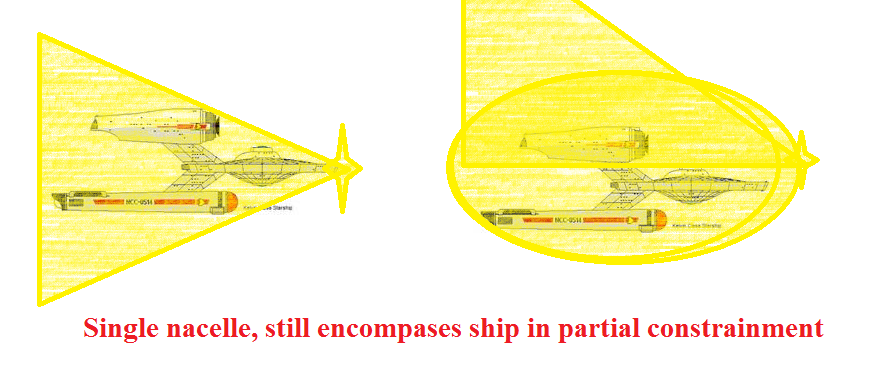The field geometry concept I have is pretty straight forward. Ships either have wide front or rear field, or a balanced field. What determines that is fore and aft hull narrowness. I don't bother with side profile, only top-down profile since the latter is always more significant than the former.
The D'Deridex and Defiant have balanced fields. The Galor has a bow heavy field, but only a bit more than any Starfleet ship. Klingon ships have very narrow bows, and very wide tails.
7 of 9 states that mass negatively effects warp speed. A huge ship like the D'Deridex might be slower than the Enterprise-D due fewer watts per ton, or there could be some sort sort of non-linear relation between tonnage and warp factor.
Nacelle length doesn't matter except in regard to over all hull shape, and longer nacelles either influence the maximum ability to apply power to overcome hull limitations, or greater efficiency in extracting power from the warp plasma, or offers warp engines with longer life coils as each coil undergoes less stress with the load spread among more coils. Unfortunately these ideas are still awaiting confirmation or contradiction of fact from the shows or movies.
I think pointy and narrow geometries should be fastest, and the closest confirmation of this I have is in how the Defiant has a top speed of warp 9.5, and the Nova class has a top speed of warp 8. It's not perfect, but their volumes should be similar; on the other hand the Defiant is probably at least four times stronger. A further point against this is, the Defiant is noted as having structural integrity issues during warp flight, implying its engines are pushing too hard for the hull geometry, meaning its natural top speed might be lower than warp 9.5.
It also implies hull shape doesn't influence warp field geometry, but that hull shape only matters in regard to avoiding hull stresses.






